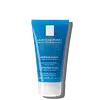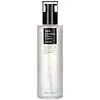What's inside
What's inside
 Key Ingredients
Key Ingredients

 Benefits
Benefits

 Concerns
Concerns

 Ingredients Side-by-side
Ingredients Side-by-side

Water
Skin ConditioningButylene Glycol
HumectantGlycerin
HumectantHydroxyethylpiperazine Ethane Sulfonic Acid
BufferingPerlite
AbsorbentAmmonium Polyacryloyldimethyl Taurate
Emulsion StabilisingSodium Hydroxide
BufferingPumice
AbrasivePoloxamer 184
EmulsifyingDisodium EDTA
Caprylyl Glycol
EmollientXanthan Gum
EmulsifyingT-Butyl Alcohol
PerfumingPolyquaternium-47
Skin ConditioningBHT
AntioxidantSodium Benzoate
MaskingPhenoxyethanol
PreservativeMyrtrimonium Bromide
PreservativeParfum
MaskingWater, Butylene Glycol, Glycerin, Hydroxyethylpiperazine Ethane Sulfonic Acid, Perlite, Ammonium Polyacryloyldimethyl Taurate, Sodium Hydroxide, Pumice, Poloxamer 184, Disodium EDTA, Caprylyl Glycol, Xanthan Gum, T-Butyl Alcohol, Polyquaternium-47, BHT, Sodium Benzoate, Phenoxyethanol, Myrtrimonium Bromide, Parfum
 Reviews
Reviews

Ingredients Explained
These ingredients are found in both products.
Ingredients higher up in an ingredient list are typically present in a larger amount.
Butylene Glycol (or BG) is used within cosmetic products for a few different reasons:
Overall, Butylene Glycol is a safe and well-rounded ingredient that works well with other ingredients.
Though this ingredient works well with most skin types, some people with sensitive skin may experience a reaction such as allergic rashes, closed comedones, or itchiness.
Learn more about Butylene GlycolXanthan gum is used as a stabilizer and thickener within cosmetic products. It helps give products a sticky, thick feeling - preventing them from being too runny.
On the technical side of things, xanthan gum is a polysaccharide - a combination consisting of multiple sugar molecules bonded together.
Xanthan gum is a pretty common and great ingredient. It is a natural, non-toxic, non-irritating ingredient that is also commonly used in food products.
Learn more about Xanthan Gum